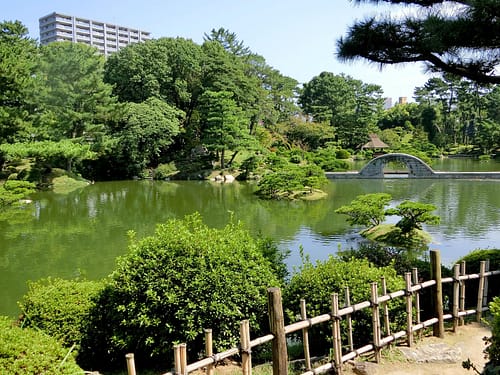Whether you’re a traveler, journalist, activist, or student, Hiroshima boasts no lack of peace groups ready to share information. The peace organizations listed here offer English or other foreign language support. This list is by no means exhaustive, but we’re doing our best to keep it thorough and up-to-date.
Hiroshima Peace Organizations
ANT-Hiroshima
ANT-Hiroshima was founded in 1989 by executive director Tomoko Watanabe and pursues its work, in and out of Japan, through a wide network of partners and supporters. The Hiroshima-based NGO is dedicated to international peace-building through a range of grassroots activities related to peace, cooperation, education, and public awareness. Inspired by the resilient spirit of the A-bomb survivors, ANT-Hiroshima seeks to build bonds of trust and promote Hiroshima’s message of peace and reconciliation. The acronym ANT, which stands for Asian Network of Trust, also symbolizes the organization’s belief that by joining together in our efforts, like ants, we can gain greater strength and accomplish greater things.
Social Book Cafe Hachidori-sha
Hachidori-sha, or the “hummingbird cafe,” is a place that promotes social connections – it connects people, society, and Hiroshima with the world. The cafe holds various events such as film screenings, hands-on workshops, gatherings to discuss and learn about social issues, and talk shows where a wide range of guests are invited. One of the most highly recommended events is held on the 6th, 16th, and 26th of every month, and provides regular opportunities for visitors to sit down and chat with A-bomb survivors. The cafe is only a three-minute walk from Hiroshima Peace Memorial Park. Visitors to the park might have an opportunity to meet one another afterward and share their thoughts over a cup of coffee. The cafe offers drinks and meals prepared with local ingredients.
LinguaHiroshima
LinguaHiroshima is a database of multilingual publications of atomic bomb literature.
They launched their research into the multilingual publication of atomic bomb literature in 2014, a year before the 70th anniversary of the Hiroshima and Nagasaki atomic bombings. LinguaHiroshima aims to create a comprehensive survey into the process of the worldwide acknowledgment of Hiroshima and Nagasaki for more than 70 years.
They have registered 4,135 books and papers available in 75 languages as of July 10, 2021. Their annotated bibliography is classified into seven categories: general literature, juvenile literature, memoirs, graphic and photographic records, history and social sciences, medical sciences, physical sciences and engineering, and publication year. While you search the database for the publication information of books and papers, you will gradually discover how the world has shared information related to the atomic bombings since 1945.
The Center for Peace, Hiroshima University
The predecessor to the Center for Peace, Hiroshima University — called the Institute for Peace Science, Hiroshima University (IPSHU) — was established on July 8, 1975, as an intramural, university-wide facility. Its primary purpose was the collection of data and research into peace studies. At that time, IPSHU was the first academic research body of its kind in Japan. To this day, it remains the only peace research institute among Japan’s national universities. Over the years, IPSHU became a permanent academic institution tasked with increasingly broader functions. To reflect this change, IPSHU became the Center for Peace, Hiroshima University (CPHU) on April 1, 2018.
CPHU focuses on two areas of expertise:
- Hiroshima peace research (e.g., memories and effects of the atomic bombings, post-disaster reconstruction, and nuclear disarmament)
- Global peace research (e.g., peacebuilding, human rights, structural and environmental violence)
By facilitating joint research projects, international symposia, and research seminars, the CPHU plays a significant role in connecting institutions and scholars working in Peace Studies domestically and internationally.
Hiroshima Peace Institute, Hiroshima City University
The Hiroshima Peace Institute (HPI) was established on April 1, 1998, as a research institute affiliated with Hiroshima City University.
Located in the city that experienced the first atomic bombing in human history, the institute aims to develop into an international research center that can, through academic research, contribute towards nuclear abolition, the resolution of global issues, the realization of sustainable global peace, and the development of local communities.
It is also HPI’s aim to create ties with other peace research institutions, both within and outside the country, for the purpose of developing peace studies. At the same time, HPI widely disseminates research outcomes to society through public lectures, symposiums, publications, and other means.
World Friendship Center
The World Friendship Center (WFC) is a non-profit peace organization founded in 1965 in Hiroshima Japan by
Barbara Reynolds. For over 55 years, WFC has provided a place where people from many nations can meet, share their experiences, and reflect on peace.
WFC’s motto is “to foster peace, one friend at a time.”
WFC is made up of volunteers and staff dedicated to providing a place to tell the stories of Hibakusha (A-bomb survivors) and to support guests’ Peace Studies through guided tours and hearing Hibakusha talks. We also share the story of WFC as it has carried on the vision of Barbara Reynolds in advocating for the elimination of nuclear weapons.
